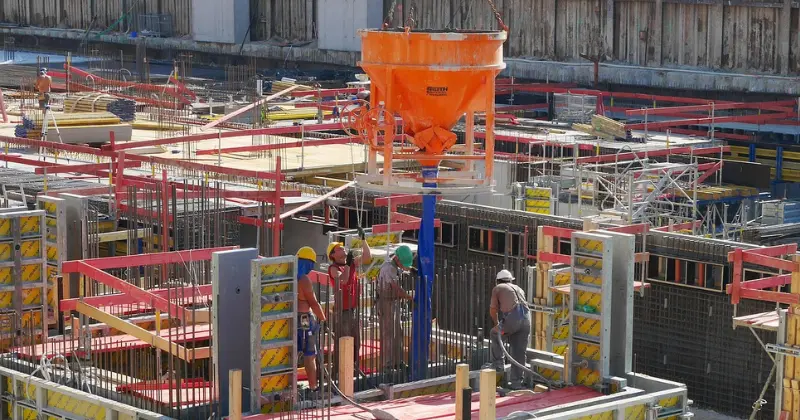11 mins read
The Top 10 Benefits Of Good Business Intelligence For The Construction Industry
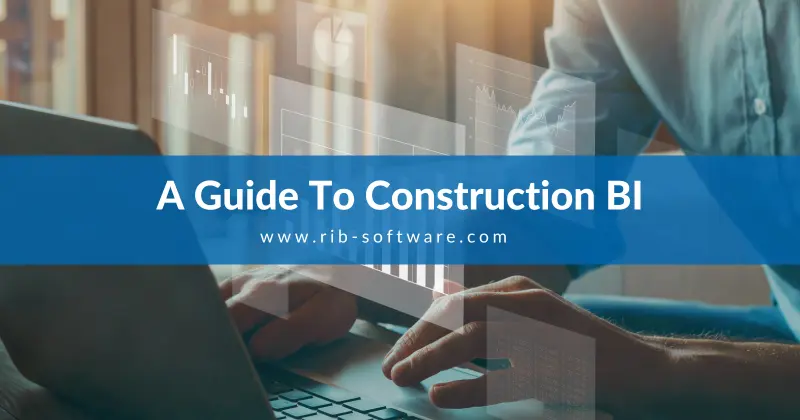
The construction industry has access to more information than ever before. Effectively using this information is the secret to more successful projects. With the proper business intelligence technology, construction companies can better use large amounts of data to assist the decision-making process and meet the industry’s ever-rising demands.
Bsiness intelligence is much more than just investing in software. Successful construction BI requires careful planning and the involvement of all stakeholders to extract its maximum potential.
To help you succeed in your construction business intelligence journey, this guide explores the definition, benefits, best practices, and common challenges to help you approach the process informed and prepared.
Let’s dive in!
What Is Construction Business Intelligence?
Construction BI is the process of collecting, analyzing, and monitoring construction data to make informed decisions and boost project performance. Companies invest in software to extract insights in real-time and ensure projects are completed on time and within budget.
Businesses have been using data to optimize their processes for decades. Analytics has become even more important with most industries undergoing digital transformations. The situation is no different in construction. While it is a known fact that our sector has been slower in adopting digital technologies, in recent years, multiple industry-specific BI solutions have been developed to assist decision-makers in informing their strategies and ensuring successful project management from preconstruction planning all the way to the final stages of the project.
A well-implemented BI framework allows construction companies to gather raw data from multiple disparate sources, such as drawings, estimates, specifications, and much more, and connect it in a centralized location to be analyzed and monitored in real-time. Tracking the live progress of different tasks can provide a huge competitive advantage for companies in the building sector. Different project stakeholders can collaborate in an online interface, eliminating the collaboration challenge that has haunted the industry for decades.
But what makes BI different from traditional analytics methods and tools?
Traditional means of data management and analysis are static, number-driven reports that are quickly outdated and difficult to understand for non-technical users. With the many components that make up a construction project and the need to make decisions in real-time, these traditional methods are no longer enough. Modern construction business intelligence technologies have data visualization and interactivity at their core. This means all your construction project data can be visualized in the shape of interactive charts and graphs that are updated in real-time. The user-friendly nature of visualizations makes the data easier to understand and interpret for any user, making it possible to implement a data-driven culture in the project while boosting construction productivity.
In today’s data-driven world, construction leaders can no longer rely solely on intuition to make important strategic decisions. Still, many fail in their analytical efforts due to a lack of connectivity between systems, repetitive reporting, and unprioritized or unorganized data. That is why supporting your BI efforts with the right software is so important. Companies that understand the value that can be extracted from their own data and invest in the right BI tools are set to succeed.
To keep putting the value of business intelligence for construction into perspective, we’ll explore some key benefits your organization can reap!
Top 10 Benefits Of Professional Construction BI
Even though modern BI has proven itself with some of the industry’s leading organizations, many are still reluctant to move forward and embed the right software and practices into their projects. This is mainly due to the assumption that the software itself is complicated or challenging to use, even though the leading products available today were designed and adapted specifically for the construction industry. Modern BI is becoming eminently more user-friendly and quickly adopted by even the more technically challenged users.
To remove any misconceptions or fear of implementation, let’s explore ten benefits in detail.
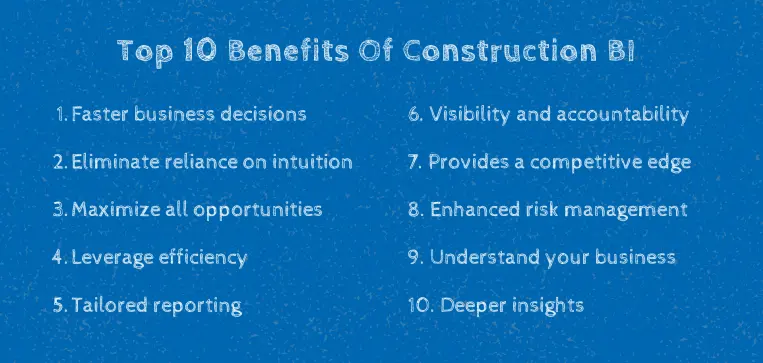
1) Faster business decisions
More than any other industry, construction holds vast amounts of data that are often held in autonomous systems and not formatted for integrated use. Modern construction business intelligence software allows all data to be integrated and analyzed together, giving true and accurate insights into the bigger picture and facilitating better decision-making and evaluation. Even better, the data is updated automatically, eliminating the tedious manual tasks of cleaning and preparing it for analysis. Plus, everything is available across all departments and project areas in real-time, allowing businesses to make more timely decisions.
2) Eliminate reliance on intuition
Like the ‘speed’ that integrated data provides, modern construction intelligence also provides the scope of information required to make the most informed decisions rather than mainly going on ‘gut instinct.’ Although that ‘gut instinct’ was traditionally one of the value-added functions of an experienced employee or executive in construction, it has been largely superseded by fact-based decision-making centered on up-to-the-minute, bespoke data that all but removes the element of guesswork. This effectively removes risk in most business decisions across the entire process and project.
3) Maximize all opportunities
Real-time business intelligence gives an intricate breakdown of all aspects of a project, from completed tasks to progress and completion (on-time and on-budget data being arguably the most important). This allows a business to assess performance and delivery in all areas and identify any issues before they can affect the project. For instance, professional construction BI solutions offer intelligent alerts that provide early warning for cost overruns to find appropriate solutions and minimize impact.
4) Leverage efficiency
A common complaint in the construction industry relates to the time and resources required to pull data from multiple sources. In addition to the cost and time needed to collect and clean this data, it is often outdated or inaccurate (based on estimations and projections that have not been adjusted and updated by integrated software). Utilizing the power of state-of-the-art construction applications allows this information to be accessed from a single point, ensuring it is fully up-to-date and accurate.
5) Tailored reporting
It stands to reason that having an abundance of centralized data will allow a business to use it in the ways that best fit its operational model. The most powerful BI packages provide interactive construction reporting capabilities that can be tailored to the company’s specific needs. Plus, as mentioned earlier, the visual nature of BI reports makes it easier for non-technical users to integrate data into their workflows.
The cloud nature of most business intelligence solutions makes it possible to connect on-site and off-site project stakeholders through reports, making it easier to collaborate and communicate. This is a benefit that was unimaginable a few years ago, when on-site workers had to wait till they got to the office to be able to report on progress or any issues, making projects way less time-efficient and more expensive.
6) Visibility and accountability
Any experienced construction professional will have felt the frustration of progress and strategy meetings being elongated or stalled completely by inconsistent data. Where data sources are not integrated, differences in the core information can create such inconsistency that effective outcomes can be almost impossible, or at best, a poor compromise, due to an undetermined starting point. With fully integrated data, jockeying for position or, in some cases, avoiding responsibility can be eliminated by clearly visible absolute transparency and accountability.
7) Provides a competitive advantage
In this digital age, accessing data in the field has become common practice, and professionals who lack it are put at a significant disadvantage. Integrated cloud-based construction software allows access and employs vital information in any location and acts on that intelligence to make in-the-field assessments and decisions from your portable devices. The online nature of professional construction business intelligence tools allows on-site workers to access and upload data from their mobile devices, making it possible to promptly act on any issues or opportunities.
8) Enhanced risk management
Whether we like it or not, construction projects involve risks that can affect the schedule, budget, and safety. Therefore, implementing strategies to mitigate these risks is of utmost importance. Modern business intelligence in construction provides the knowledge to assess risks at the planning stage and implement prevention strategies. This is possible thanks to the analysis of historical data that allows you to learn from past experiences to make better present decisions. It also allows you to identify potential issues in real-time during construction and mitigate the consequences of the problem.
9) Understand your business
Staying within profitable margins is one of the most important aspects of succeeding in today’s construction environment. The ability to identify key areas of strength and weakness will allow businesses to readily identify where they should replicate successful aspects or employ corrective actions before it’s too late. Ask your prospective software partner to highlight where their solution can be used in this area, with particular emphasis on real-time cost and time overrun reporting.
10) Deeper Insights
The trade-off between time and efficiency and a natural reluctance to avoid tedious or repetitive tasks often leads to minimal data employed in manual reporting (or the most readily available). Specialist software collates all data from all areas in exact and accurate detail, ensuring that the information being displayed and considered is not only accurate and complete but also entirely up to date.
Best Practices For Construction Management Business Intelligence
Now that you understand the benefits of using business intelligence in the construction industry, you can implement it in your business. To help you be successful in the process, we’ll discuss some essential best practices you should follow.
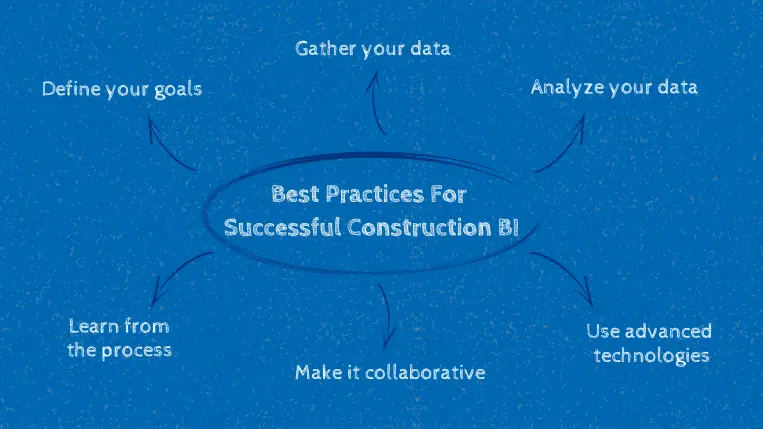
▷ Define your goals and objectives
The first step before considering BI is to define your goals and objectives. For this, you should answer critical questions like: What are we looking to gain from the process? How much do we want to invest? What kind of data do we need to use? What is our team’s level of data literacy?
Answering these questions beforehand will help you start on the right foot and prevent surprises mid-implementation.
▷ Gather your data
As you’ve learned by now, data is the driving force of business intelligence. Therefore, gathering data is the most important step after defining your goals and objectives. That said, it is not about collecting and using data for analysis. When looking for your sources, you should go back to your goals and gather only the information that will help you inform your strategies and achieve those goals.
Many organizations across industries fail in their analytical efforts because they measure too much. There is an old saying in the BI world: just because something can be measured does not mean it should be measured. Analyzing too much data can derail your analysis and misinform your decisions. Therefore, this step is critical and should be done with the support of professional tools.
▷ Analyze your data
Armed with the right data, you can start generating professional construction reports and analyzing them to extract valuable performance insights. For this process, you can select 3 to 5 key performance indicators (KPIs) per project area and track them in real-time to extract valuable conclusions. KPIs in a construction project can be financial, like the cost variance or the cash flow, or operational, like the planned vs. actual timeline or the schedule performance index (SPI).
▷ Make it collaborative
Collaboration is fundamental for the success of construction business intelligence. Your efforts are worth nothing if all team members and project stakeholders are not working towards the same goals and based on a single source of truth. Collaboration and communication in construction have always been a challenge and a reason for project failure. Therefore, ensuring everyone is on board and trained to implement BI into the project is paramount.
▷ Use advanced technologies
Investing in BI software that offers advanced technologies, such as machine learning, artificial intelligence, and predictive analytics, can help elevate your analytical efforts. For instance, predictive analytics technologies take historical and current data to extract trends and patterns and predict future events. Forecasting can be extremely useful in construction cost estimation, risk management, resource planning, and much more. Conversely, AI technology can help you extract deeper insights that would otherwise remain untapped and automate several processes in a project’s lifecycle.
▷ Learn from the process
Project data is valuable not only during project completion. The value of BI in construction is that it helps extract insights to improve the organization as a whole. For that reason, after the project is finalized, you should take the data and learn from it. The conclusions extracted from the analysis can later be used to plan strategies for future projects, making them more time—and cost-efficient. You can also learn from the process to improve communication and any other internal processes to boost productivity and efficiency.
Common Challenges Of Construction BI & How To Overtake Them
We’ve discussed best practices, but the BI process also has many challenges. While unexpected situations cannot be entirely avoided, you can still think ahead and be prepared to tackle common issues that other companies have already faced and solved. Let’s discuss some of them below.
▷ Data quality
This is one of the most prominent challenges organizations from any industry face when implementing BI and analytics into their workflows. As mentioned earlier, it is about more than just gathering data and using it for analysis. The data you use should be accurate and meet basic quality requirements before considering it for decision-making. If poor-quality information is used in the construction sector, it can lead to building issues that can risk the safety of the people using the structure.
To prevent quality issues, you should support yourself with the right technology to help you clean and prepare your data for analysis. Generating reports to regularly review and monitor quality practices during collection and analysis is also a great practice.
You should also train data users to identify the characteristics of quality data. In short, they should be looking for:
- Consistency
- Cleanliness
- Transparency and accessibility
- Usability
- Connectivity
▷ Data security
The construction industry is not free of security issues. In fact, 75% of companies experienced a cyber incident in the past 12 months. This makes security a big challenge for organizations adopting BI practices, as data needs to be manipulated and shared by many people.
Apart from investing in software with top-notch security features, you can take action to mitigate the risks of security attacks. These include categorizing data based on sensitivity and limiting access to the most valuable information, ensuring data is backed up regularly to avoid losing anything during an attack and educating team members about potential threats and how to prevent them.
All-in-one construction software provides data integrity and transparency features to help you understand when, where, and who can access information. This ensures clear roles and responsibilities are defined, and privacy and security are assured.
▷ Data literacy
Data literacy refers to the ability to understand and communicate with data, and it represents a big challenge for construction companies. If all stakeholders are not working with data, then your BI efforts are at risk of failing. Luckily, modern construction solutions are user-friendly and can be used by non-technical users. However, a level of analytical knowledge is still required. Therefore, you should assess the level of literacy within the organization and project stakeholders and provide training opportunities to anyone who needs it. This will help you start on the right foot and prevent any disconnections between individuals working on the project.
What Can Construction BI Tools Do For You
Business Intelligence (BI) tools are applications that make it easier for businesses to find, understand, and document data. Construction projects use a lot of data from different sources throughout the construction process. By applying BI tools, you can make the data flow more manageable and turn it into something structured and actionable.
Below, we’ll discuss some key features offered by RIB BI+, our innovative platform to support your analytical efforts!
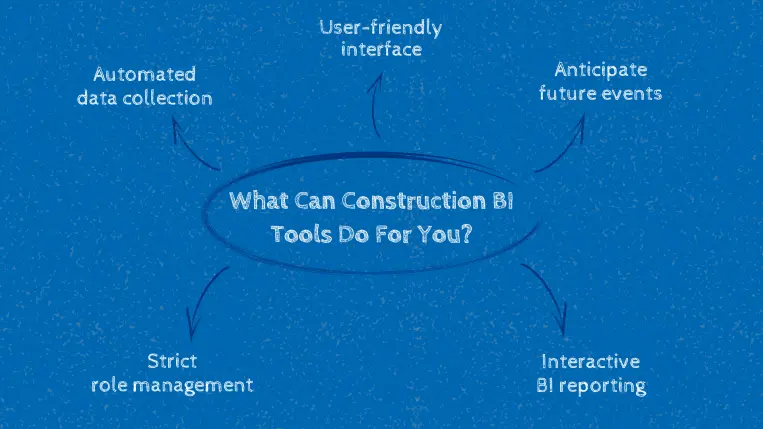
▷ Automated data collection
Collecting and preparing data manually is time-consuming and highly subject to errors that can damage your analysis and strategies later.RIB BI+ allows you to automate the collection and preparation of data so it is ready for analysis. This leaves you hours to focus on other essential tasks and prevents important data from being lost or ignored. Professional connectors help you integrate all your data sources into a centralized location to perform cross-analysis and support decision-making.
▷ User-friendly interface
RIB BI+ has an intuitive drag-and-drop interface that allows users to easily generate or modify reports without writing a single line of code. This feature is invaluable as it helps eliminate the data literacy challenge mentioned earlier in the post and empowers users to integrate data into their workflows. The interface can also be used to adapt pre-made templates to make them more tailored to your project’s needs.
▷ Anticipate future events
While nothing can ever be 100% certain, our BI platform uses predictive analysis technologies
to understand future scenarios with high accuracy. Instead of making guesses based on past performance, RIB BI+ uses advanced algorithms to help you more accurately determine the possible outcome of specific actions. For instance, you can do a financial forecast and implement informed strategies for construction cost control.
▷ Interactive BI reporting
One key benefit of our tools is the ability to generate interactive reports with real-time KPIs that track the progress and performance of different activities. Thanks to the power of informed decision-making supported by modern reporting, efficient project management in construction is possible. Some benefits from BI reports include:
- Access to Reliable Information: BI reports offer real-time data insights to help you understand information more easily instead of sifting through vast amounts of data from different sources.
- Reduce Costs: BI tools make data collection and reporting far easier. They also allow you to draw more meaningful insights, which results in a better ROI.
- Improves Decision Making: Instead of just looking at data as numbers, BI reports reveal data related to the project. These tools make data easier to understand, which allows contractors to make intelligent, data-driven decisions that lead to greater project and business success.
▷ Role management
Thanks to the power of centralized analytics, communication in construction projects is enhanced. RIB BI+ is a cloud solution that offers 24/7 accessibility to the latest project data. A role management feature allows the project manager to control who can access and manipulate what data. This is an essential feature in construction, as you might not want all teams and areas to be able to access and share sensitive information. Plus, it enhances transparency and accountability in the eventuality of data misuse.
Construction BI Final Thoughts
With so much data available, it’s essential to use the right tools to make better sense of it and use it for decision-making. Businesses that have embedded modern BI technology can thrive on opportunities and adapt to challenges at any project stage, from tendering to delivery.
The old adage of “opportunities, not problems” can be amplified by having immediate and early access to live insights, allowing your business to take the right actions quickly. Being agile can be the difference between finishing a project with your margin intact or operating at a loss.
At RIB Software, we aim to help you improve the efficiency and productivity of your projects through data-driven insights. Join the leading construction companies and benefit from a professional toolkit developed by experienced industry experts.
Our business intelligence software RIB BI+, is a state-of-the-art solution tailored to the specific needs of the construction industry. What are you waiting for? Reap the benefits of modern business intelligence today and book your free product demo!

Most Recent
11 mins read
10 mins read
10 mins read
29 mins read
Blog Categories

Ebook



